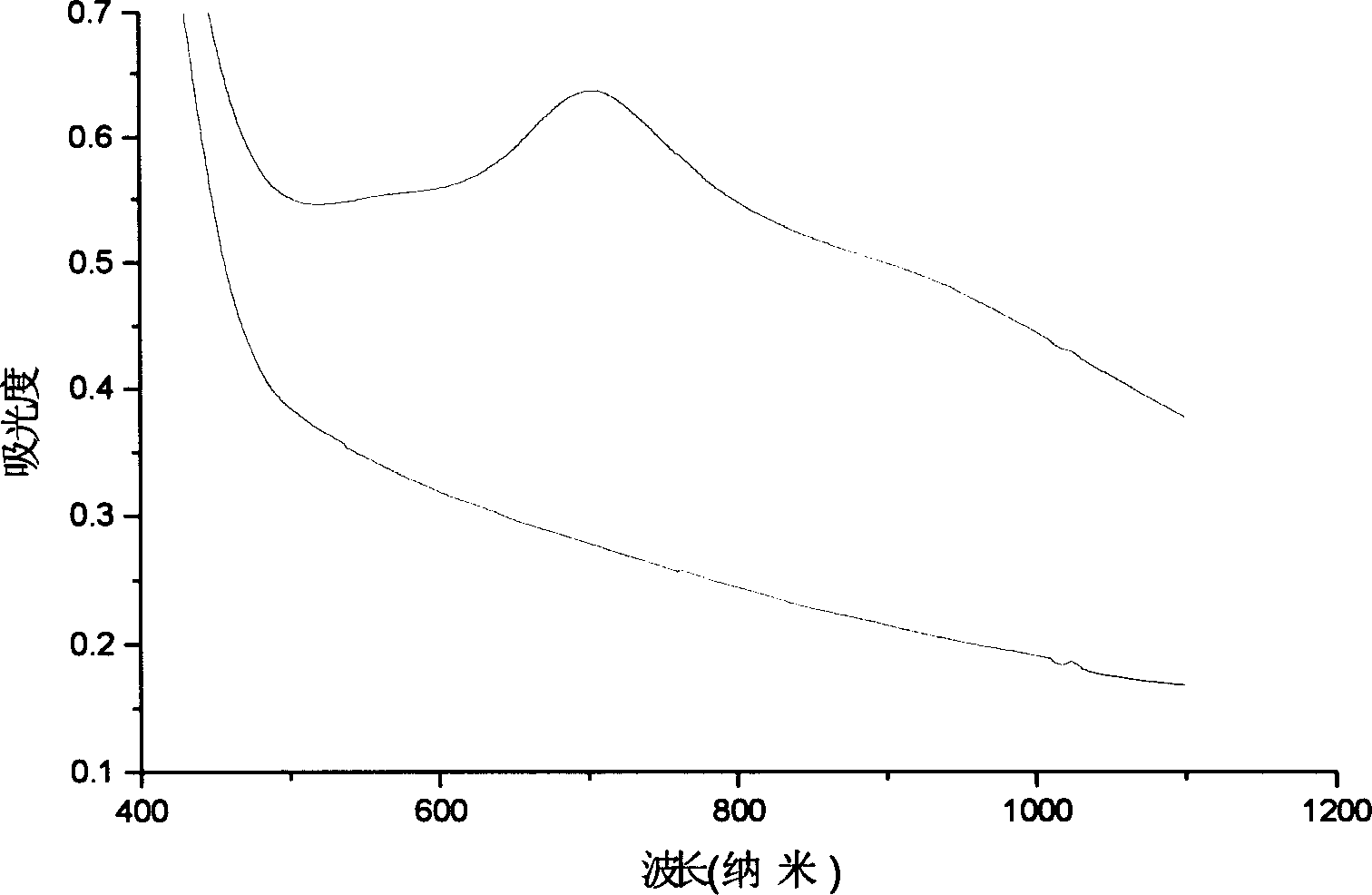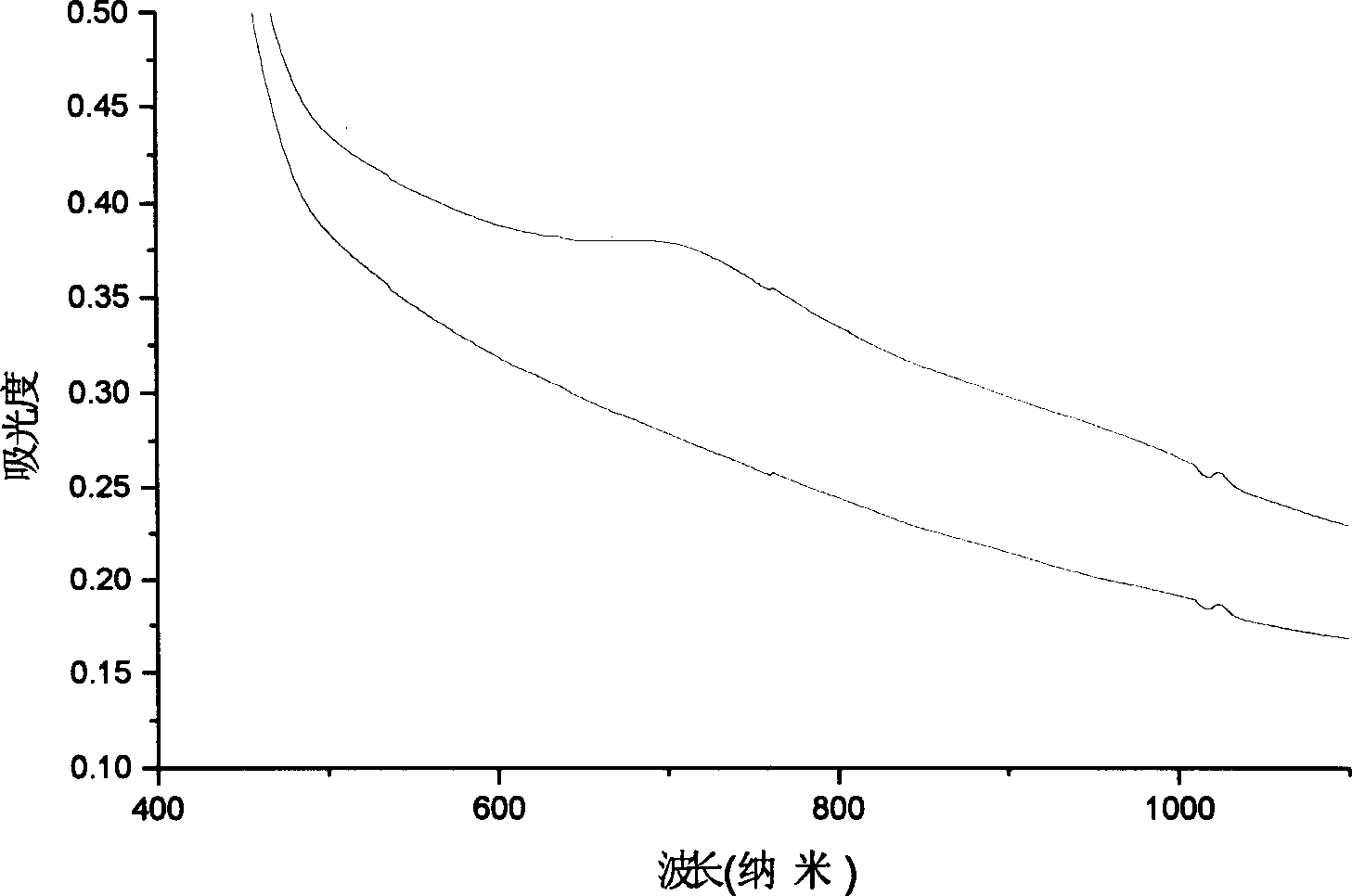Method for producing photochromic composite film and the product thereby
A composite film, visible light technology, applied in the direction of color-changing fluorescent materials, chemical instruments and methods, devices for coating liquids on the surface, etc. Effect
- Summary
- Abstract
- Description
- Claims
- Application Information
AI Technical Summary
Problems solved by technology
Method used
Image
Examples
Embodiment 1
[0021] Concentration is 5% PVP (produced by U.S. Aldrich company, number average molecular weight is 100000, purity 99%) aqueous solution is mixed with 2% molybdic acid aqueous solution, mixing ratio is 1: 10, under 15 ℃, stir 2 hours, will prepare The obtained sol was prepared into a thin film by casting method. The film has good visible photochromic performance, and the film changes from light yellow to blue when irradiated with visible light (λ > 420nm) for 30 minutes, and the change in the ultraviolet-visible spectrum at 780nm reaches 0.1.
Embodiment 2
[0023] Concentration is 10% PVA (produced by U.S. Aldrich company, number-average molecular weight is 100000, purity 99%) aqueous solution is mixed with 10% phosphomolybdic acid aqueous solution, mixing ratio is 1: 5, stirs 5 hours under 20 ℃, will prepare The obtained sol was prepared into a thin film by casting method. The prepared film has good photochromic properties of visible light. When irradiated with visible light (λ>420nm) for 60 minutes, the film changes from light yellow to light blue, and its absorption change at 780nm on the ultraviolet-visible spectrum can reach 0.3, such as figure 1 shown.
Embodiment 3
[0025] A 15% concentration of PAM (produced by Aldrich, USA, with a number average molecular weight of 100,000 and a purity of 99%) was mixed with a 13% aqueous solution of sodium molybdate in a mixing ratio of 5:1, stirred at 30°C for 8 hours, and the obtained The sol is prepared into a thin film by spin coating, and the film has good photochromic properties of visible light. When irradiated with visible light (λ>420nm) for 60 minutes, the film changes from light yellow to light blue. The absorption change at 780nm on the spectrum can reach 0.1, such as figure 2 shown.
PUM
 Login to View More
Login to View More Abstract
Description
Claims
Application Information
 Login to View More
Login to View More - R&D
- Intellectual Property
- Life Sciences
- Materials
- Tech Scout
- Unparalleled Data Quality
- Higher Quality Content
- 60% Fewer Hallucinations
Browse by: Latest US Patents, China's latest patents, Technical Efficacy Thesaurus, Application Domain, Technology Topic, Popular Technical Reports.
© 2025 PatSnap. All rights reserved.Legal|Privacy policy|Modern Slavery Act Transparency Statement|Sitemap|About US| Contact US: help@patsnap.com


